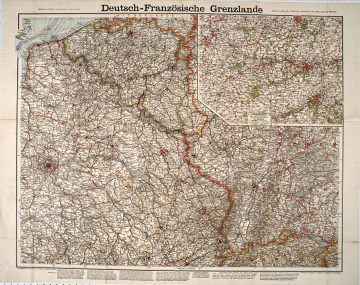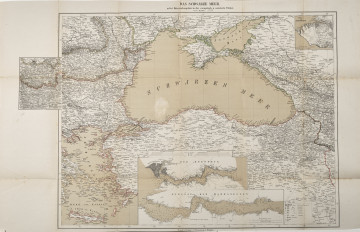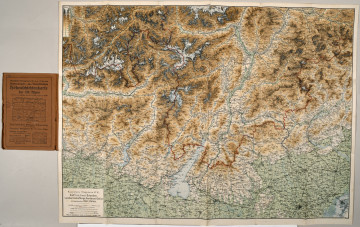
Deutsch-Französische Grenzlande
1914
Castle Museum in Łańcut
Part of the collection: Cartography
This map shows the plan of the ruins of the ancient city of Pompeii. The southern Italy city was buried under volcanic ash when Vesuvius erupted in 79 C.E. The first traced of the city were discovered in the 16th century. The first archaeological works began in 1748. During the Napoleonic Wars and the rule of Joachim Murat in the Kingdom of Naples, excavation works were overseen by French architect Charles Francois Mazois. In 1809–1813, he collected the first drawings and plans of the city, which were published in 1824–1838. The plan of the excavations in Pompeii, published in 1826, which is part of the collection of the Museum-Castle in Łańcut, was most likely made on the basis of his studies. The plan shows the shape and extent of the city walls; however, only the streets in the western part have been drawn in detail. The map author also marked the temples and the amphitheatre, which had been uncovered by then. In the upper right corner of the plan is the ex libris of the library of the Potockis of Łańcut. The map is foldable and can be stored in its original cardboard case. It bears the old library signature and a title in French: “Plans of the Pompeii formula”. In the 19th century, interest in archaeological studies was high. Aristocrats and other wealthy residents of Europe tried to visit sites and museums that showed people the newest results of studies. These travels were sometimes the result of plain snobbery. The collection of the Łańcut Museum includes maps which are souvenirs from the numerous travels of the Counts Potocki. Łukasz Chrobak
Author / creator
Object type
Cartography
Technique
Material
paper
Creation time / dating
Creation / finding place
Owner
Castle Museum in Łańcut
Identification number
Location / status

1914
Castle Museum in Łańcut

1877
Castle Museum in Łańcut

19th / 20th century
Castle Museum in Łańcut
DISCOVER this TOPIC
Museum of King Jan III's Palace at Wilanów
DISCOVER this PATH
Educational path